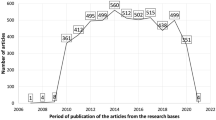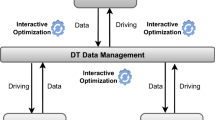Abstract
The paper describes a formal framework to integrate EXPRESS models and facilitate sharing and exchanging of data in an Extended Enterprise context. We perceive in the creation of an Extended Enterprise an opportunity to use standardized data models. Hence our research is based on three important ISO standards whose primary objective is to enhance data exchange. These standards are ISO 10303, ISO 15531 and ISO 13584, known as STEP, MANDATE and PLIB, respectively. Although they are intended to overcome incompatibility problems for the computer-based applications that are used during the product life-cycle, they turned out to be semantically incompatible among themselves. This seems to be a major drawback when individual organizations want to share core competences, such as resources, manufacturing processes, or product design, to create an Extended Enterprise. The constructs we propose harmonize incompatible model components so that core competences can be transparent to the net of enterprises. The proposal is exemplified by creating a mediator application and a repository. The mediator application is used by individual firms to gain access to the core abilities that are shared, whereas the repository is a neutral means to store such competences. It complies with part 21 of the ISO 10303 standard. The proposed formal framework provides a sound model of the information system and facilitates data sharing in the Extended Enterprise.
Similar content being viewed by others
References
Bititci U.S., Meddibil K.M.V., Albores P. (2005). Measuring and managing performance in extended enterprises. International Journal of Operations and Production Management, 25(4): 333–353
Boardman J.T., Clegg B. (2001). Structured engagement in the extended enterprise. International Journal of Operations and Production Management, 21(5–6): 795–811
Browne J. (1995). Future manufacturing systems – Towards the extended enterprise. Computers in Industry, 25, 235–254
Goldschmidt A. (1996). An approach to information mediation in the industrial domain. Journal of Intelligent Information Systems, 6, 151–170
Golshani F., Park Y. (1999). Perspective: A standards-based system for manufacturing information integration. Journal of Intelligent and Robotic Systems, 26, 231–247
Gunn J. (2000). Extended enterprise integration. BT Technology Journal, 18, 93–99
ISO – International Standards Organization (1997). ISO 10303 – Industrial Automation Systems and Integration – Product data representation and exchange – Part 1: Overview and fundamental principles, Geneva, Switzerland.
ISO – International Standards Organization (1997a). ISO 10303 – Industrial Automation Systems and Integration – Product data representation and exchange – Part 21: Implementation Methods: Clear-text encoding of the exchange structure (Physical file), Geneva, Switzerland.
ISO – International Standards Organization (1997b). ISO 10303 – Industrial Automation Systems and Integration – Product data representation and exchange – Part 22: Implementation Methods: Standard Data Access Interface, Geneva, Switzerland.
ISO – International Standards Organization (1997c). ISO 10303 – Industrial Automation Systems and Integration – Product data representation and exchange – Part 24: Implementation Methods: C++ binding for the Standard Data Access Interface, Geneva, Switzerland.
ISO - International Standards Organization (1997d). ISO 10303 – Industrial Automation Systems and Integration – Product data representation and exchange – Part 27: Implementation Methods: Java binding for the Standard Data Access Interface, Geneva, Switzerland.
ISO – International Standards Organization (1997e). ISO 10303 – Industrial Automation Systems and Integration – Product data representation and exchange – Part 41: Generic Description of Products, Geneva, Switzerland.
ISO – International Standards Organization (1997f). ISO 10303 – Industrial Automation Systems and Integration – Product data representation and exchange – Part 44: Product Configuration, Geneva, Switzerland.
ISO – International Standards Organization (1998). ISO 15531 – Industrial Automation Systems and Integration – Industrial Manufacturing Management Data – Part 1: Overview and Fundamental Principles, Geneva, Switzerland.
ISO – International Standards Organization (1998a). ISO 15531 – Industrial Automation Systems and Integration – Industrial Manufacturing Management Data – Part 32: Information Model for Resource Usage Management Data, Geneva, Switzerland.
ISO – International Standards Organization (1998b). ISO 15531 – Industrial Automation Systems and Integration – Industrial Manufacturing Management Data – Part 41: Manufacturing flow management data – Overview and Fundamental Principles, Geneva, Switzerland.
ISO – International Standards Organization (1999). ISO 13584 – Industrial Automation Systems and Integration – Parts Library – Part 1: Overview and Fundamental Principles, Geneva, Switzerland.
ISO – International Standards Organization (1999a). ISO 13584 – Industrial Automation Systems and Integration – Parts Library – Part 10: Conceptual models of Parts Library, Geneva, Switzerland.
ISO - International Standards Organization (1999b). ISO 13584 – Industrial Automation Systems and Integration – Parts Library – Part 24: Logical Resource: Logical Model of Supplier Library, Geneva, Switzerland.
ISO – International Standards Organization (1999c). ISO 13584 – Industrial Automation Systems and Integration – Parts Library – Part 26: Logical Resource: Supplier Identification, Geneva, Switzerland.
Janowski T., Lugo G., Zheng H. (1999). Modelling an extended/virtual enterprise by the composition of enterprise models. Journal of Intelligent and Robotic Systems, 26, 303–324
Kovács G., Paganelli P. (2003). A planning management infrastructure for large, complex, distributed projects: beyond ERP and SCM. Computers in Industry, 51, 165–183
Linington P.F. et al. (2004). A unified behavioural model and a contract language for extended enterprise. Data and Knowledge Engineering, 21, 5–29
López-Morales V., López-Ortega O. (2005). A distributed semantic network model for a collaborative system. Journal of Intelligent Manufacturing, 16, 515–525
López-Ortega O., Ramírez M. (2005). A STEP-based manufacturing information system to share flexible manufacturing resources data. Journal of Intelligent Manufacturing, 16, 287–301
Nahm Y.-E., Ishikawa H. (2005). A hybrid multi-agent system architecture for enterprise integration using computer networks. Robotics and Computer-Integrated Manufacturing, 21, 217–234
Pierra, G. (2000). Représentation et échange de données techniques. Mec. Ind., 1, 397–414 (In French).
Sardet, E., Pierra, G., & Ait-Ameur, Y. (1997). Formal specification, modeling and exchange of classes of components according to PLIB. In Proceedings of the PDT days, 179–200.
Stoll R.R. (1979). Set theory and logic. N.Y., Dover
Yoo S.-B., Kim Y. (2002). Web-based knowledge management for sharing product data in virtual enterprises. International Journal of Production Economics, 75, 173 – 183
Zhou, S., & Peng, Z. (2005). A complete solution for neutral knowledge representation with collaborative product development environment. International Journal of Advanced Manufacturing Technology.
Author information
Authors and Affiliations
Corresponding author
Rights and permissions
About this article
Cite this article
López-Ortega, O., Ramírez-Hernández, M. A formal framework to integrate express data models in an extended enterprise context. J Intell Manuf 18, 371–381 (2007). https://doi.org/10.1007/s10845-007-0035-7
Received:
Accepted:
Published:
Issue Date:
DOI: https://doi.org/10.1007/s10845-007-0035-7




